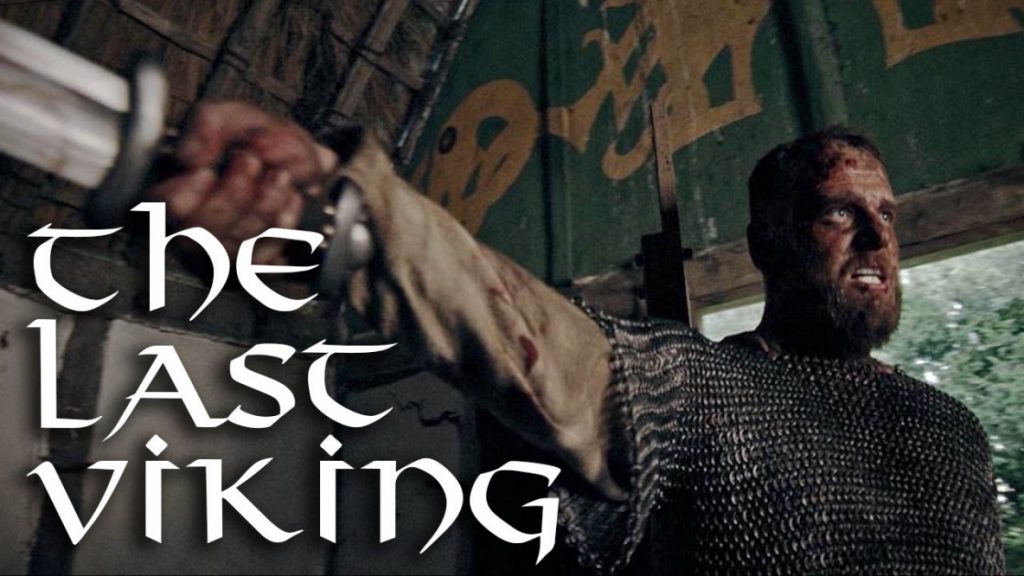
On 18 September 1066, the last great Viking began his final campaign, the invasion of England. Harald Hardrada’s life and military career reads like something out of Bernard Cornwell’s novels, an adventurer, mercenary, king, conqueror, administrator and hero of the Icelandic sagas, this last audacious attack was a fitting end to his career.
Its real historical significance, however, was that it weakened the army of King Harold to an extent where he could be beaten by another man of Viking descent – William the Conqueror.
Raised for war
Harald was born in 1015 in Norway, and the sagas that have preserved his memory claim descent from the legendary first King of that country – Harald Fairhair.
At the time of his birth, Norway was part of the Danish empire of King Cnut, which included England and parts of Sweden. The Norwegians were not happy with foreign rule and Harald’s older brother Olaf was exiled for his dissent in 1028.

14th-century portrait of Cnut the Great. Image credit: Public Domain, via Wikimedia Commons
Image Credit: Public domain, via Wikimedia Commons
When the fifteen year-old Harald heard of his planned return two years later, he gathered a force of 600 men to meet his brother, and together they raised an army to take on Cnut’s loyalists. At the ensuing battle of Stiklestad Olaf was killed, and Harald badly wounded and forced to flee, though not before showing considerable fighting skill.
Rise to stardom
After recovering in a remote cottage in the far north-east, he escaped into Sweden and, after a year of travelling, found himself in the Kievan Rus – the confederation of Slavic tribes which included Ukraine and Belarus, and is seen as the ancestor state to modern Russia.
Surrounded by enemies and in need of soldiers, Grand Prince Yaroslav the Wise welcomed the newcomer, whose brother had already served him during his own exile, and gave him command of a detachment of men near modern St Petersburg.
Over the following years Harald saw his star rise after fighting against the Poles, Romans and the fierce steppe nomads who always threatened from the east.
Mercenary service
By 1034 the Norwegian had a personal following of around 500 men, and took them south to Constantinople, capital of the Roman Empire. For decades now the Roman Emperors had kept a bodyguard of Norsemen, Germans and Saxons, picked for their powerful stature and known as the Varangian Guard.
Harald was an obvious choice, and quickly became the overall leader of this body of men, though he was still only twenty or twenty-one. Despite their status as bodyguards the Varangians saw action all across the Empire, and Harald was credited with the capture of 80 Arab fortresses in present-day Iraq.

Near-contemporary depiction of Byzantine Varangian Guardsmen, in an illumination from the ‘Skylitzes Synopsis’. Image credit: Public Domain, via Wikimedia Commons
Image Credit: Public domain, via Wikimedia Commons
After peace was won with the Arabs, he joined an expedition to retake Sicily, which had recently been conquered and declared an Islamic caliphate.
There, fighting alongside mercenaries from Normandy, he further cemented his reputation, and in the tumultuous years that followed he saw service in the south of Italy and Bulgaria, where he earned the nickname “Bulgar burner.”
When the old Emperor, and Harald’s patron, Michael IV died, his fortunes sank however, and he found himself imprisoned. Various sagas and accounts give different reasons why, though there are many hints at a sex scandal at court, which was divided between the followers of the new Emperor Michael V and the powerful Empress Zoe.
His stay in jail was not long, however, and when some loyal Varangians helped him escape he exacted a personal revenge and blinded the Emperor, before taking his newly amassed wealth and marrying Yaroslav’s daughter back in the Rus. In 1042, he heard of Cnut’s death and decided that the time was right to return home.
Though he had helped her win the imperial throne, Zoe refused to let him go, and so he once again escaped with a band of loyal men, heading north.
Returning home
By the time he returned in 1046, Cnut’s empire had collapsed, his sons had both died, and a new rival, Magnus the Good, son of Olaf, ruled over Norway and Denmark.
In the latter kingdom he had deposed Harald’s other nephew Sweyn Estridsson, who he joined in exile in Sweden. His efforts to oust the popular Magnus proved futile however, and after negotiations they agreed to co-rule Norway.
 Watch Now
Watch NowAfter just one year, fate and luck played into Harald’s hands, as Magnus died childless. Sweyn was then made King of Denmark, while Harald finally became sole ruler of his homeland. Never content with sitting still, the years between 1048 and 1064 were spent in constant, successful but ultimately fruitless war with Sweyn, which won Harald more reputation but never yielded the throne of Denmark.
He also earned his nickname “Hardrada” – hard ruler – during these years.
King of Norway
Norway was a land unused to strong central rule, and the powerful local lords were difficult to subdue, meaning that many were violently and brutally purged. These measures proved effective however, and most domestic opposition had been removed by the end of the wars with Denmark.
The more positive side of his rule was brought by his travels, as Harald opened trade with the Romans and the Rus, and developed a sophisticated money economy in Norway for the first time. Perhaps more surprisingly, he also helped the slow spread of Christianity across the scattered rural parts of the country, where many still prayed before the old Norse gods.
After 1064 it became clear that Denmark would never belong to Harald, but events across the North Sea in England soon turned his head, After the death of Cnut, that country had been ruled by the steady hand of Edward the Confessor, who had spent the 1050s negotiating with the Norwegian King and even hinting that he might be named as successor to the English throne.
The Viking invasion
When the old King died childless in 1066 and Harold Godwinson succeeded, Harald was angry, and allied himself with Harold’s bitter estranged brother Tostig, who helped convince him that he ought to seize the power that was rightfully his. By September, his swift preparations for an invasion were complete, and he set sail.

The Battle of Stamford Bridge, from The Life of King Edward the Confessor by Matthew Paris. 13th century. Image credit: Matthew Paris, Public domain, via Wikimedia Commons
Image Credit: Matthew Paris, Public domain, via Wikimedia Commons
Harald was getting old by now and knew the risks of the campaign – making sure to declare his son Magnus King before leaving. On 18 September, after a journey via the Orkney and Shetland islands, the Norwegian fleet of 10-15000 men landed on English shores.
There Harald met Tostig face-to-face for the first time, and they planned their attack southwards. The situation had played into their hands. King Harold was waiting with the English army on the south coast, anticipating an invasion from William, the Duke of Normandy, who – like Harald – believed that he had been promised the English throne.
The Norwegian army first met with resistance from the town of Scarborough, which refused to surrender. In response Hardrada burned it to the ground, causing several northern towns to hurriedly pledge their allegiance.
Though Harold was only just responding to the threat in the north, having been taken completely by surprise, his strongest northern lords, Morcar of Northumbria and Edwin of Mercia, raised armies and met the Norwegians at Fulford near York, where they were soundly defeated on 20 September.
York, the old Viking capital, then fell, leaving the north of England conquered.
The Earls and their men fought bravely at the Battle of Fulford, but were hopelessly outmatched. But then Hardrada made his fatal mistake. In keeping with the practice of Viking raiders in the past, he withdrew from York and waited for the hostages and ransom he had been promised. This withdrawal gave Harold his chance.
On 25 September Hardrada and his men went to receive York’s leading citizens, lazy, confident and wearing only the lightest of armour. Then, suddenly, at Stamford Bridge, Harold’s army fell on them, having undergone a lightning-quick forced march to surprise Harald’s forces.
 Listen Now
Listen NowFighting without armour, Hardrada was killed – along with Tostig, at the beginning of the battle and his troops quickly lost heart.
The remnants of the Viking army got back into their ships and sailed home. For the Vikings, this marked the end of an era of great Viking raids on the British isles; for Harold however, his struggle was far from over.
Following his victory at Stamford Bridge, Harold’s exhausted, bloodied men then heard terrible news to cut off any thoughts of celebration. Hundreds of miles to the south William – a man who combined French discipline with Viking savagery, had landed unopposed.
As for Harald, a year after Harold’s death at the battle of Hastings, Harald’s body was finally returned to Norway, where it still rests.
This article was co-authored by Craig Bessell.














